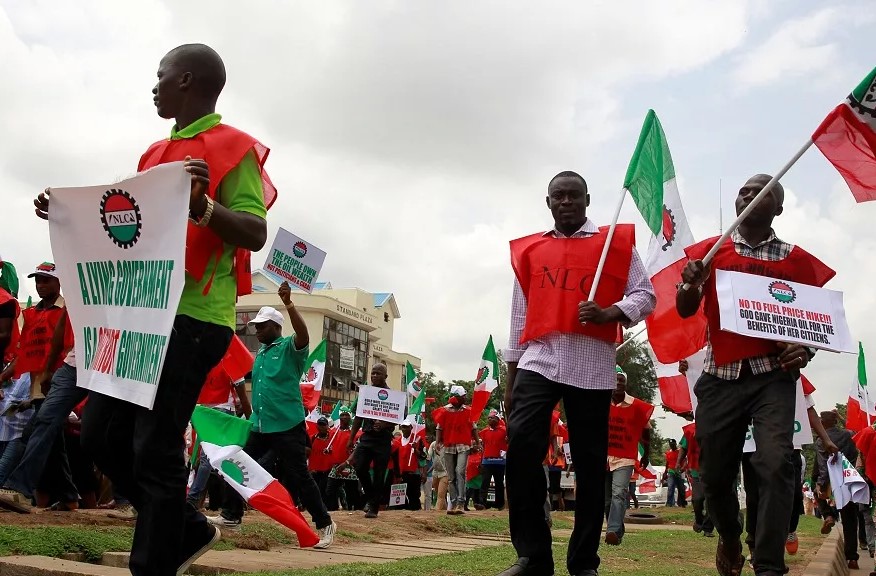Nigeria’s headline inflation fell to 22.22% in June 2025, its lowest in over a year. However, food and core prices remain sticky. Global inflation and monetary policies continue to influence Nigeria’s macroeconomic outlook, while oil earnings support the naira and external reserves, so says our economic report of this week.
US and UK Inflation: Higher Prices, Delayed Rate Cuts
The US Bureau of Labour Statistics (BLS) reported that the country’s headline inflation rose to 3.50% YoY in June, up from 3.30% in May, while core inflation held steady at 3.70% YoY, indicating that underlying price pressures remain firm.
Headline inflation increased by 0.30% MoM, marking the second consecutive monthly uptick, driven largely by higher costs linked to recently imposed import tariffs on selected industrial and consumer goods.
Tariff pass-through effects are adding to already elevated costs across manufacturing and household spending, complicating the Federal Reserve’s path towards policy easing.
Upside inflation risks and anticipation of delayed monetary easing may keep the US dollar firm and global funding conditions relatively tight.
For emerging markets, including Nigeria, this could sustain mild pressure on local currencies and limit room for domestic yield compression.
Frontier markets may also face higher external borrowing costs in the short term, especially if global risk appetite shifts back toward US fixed income.
We expect the strong US inflation data to sustain a firmer dollar in the near term and keep US Treasury yields supported, delaying the Fed’s policy pivot until there is clearer evidence of disinflation.
The UK Office for National Statistics (ONS) reported that headline inflation accelerated to 3.60% YoY in June 2025, up from 3.40% in May, exceeding market expectations and reversing some of the moderation seen earlier this quarter.
The monthly inflation rate also rose, from 0.10% in May to 0.30% in June.
The unexpected rise was driven by declines in energy and food prices.
We expect the increased inflationary pressure to delay expectations for a near-term rate cut by the Bank of England, keeping global funding costs marginally tighter in the short term.
This may support sterling strength and lift UK yields modestly, sustaining a mild tightening bias in developed market funding flows.
For Nigerian investors, this reinforces the need to monitor external rate moves closely, as prolonged high yields abroad could influence capital flows and FX pressures.
Is the Fed losing its grip on disinflation? We invite your thoughts in the comments.
Nigeria’s Inflation Path: A Mixed Bag of Relief and Pressure
The National Bureau of Statistics (NBS) reported that Nigeria’s headline inflation eased to 22.22% YoY in June 2025, from 22.97% YoY in May, marking a modest 0.75% decline.
Monthly price pressures remained firm, with headline, food, and core inflation rising to 1.68% MoM, 3.25% MoM, and 2.46% MoM, respectively (vs 1.53%, 2.19%, and 1.10% in May).
Food inflation accelerated to 21.97% YoY in June, up from 21.14%, driven by higher prices of pepper, tomatoes, meat, and plantain flour, highlighting ongoing supply constraints.
Core inflation also increased to 22.76% YoY from 22.28%, reflecting rising costs in transport, ICT, and financial services.
We expect the MPC to maintain a cautious stance at its next meeting to consolidate recent gains and manage persistent supply-side risks.
Headline inflation is likely to stay sticky near current levels in the near term due to seasonal food pressures and structural bottlenecks.
A more sustained slowdown will depend on stronger domestic food supply, better distribution, and continued policy discipline.
According to the National Bureau of Statistics (NBS), the headline inflation rate moderated to 22.22% year-on-year in June from 22.97% year-on-year in May.
Despite this trend, month-on-month inflation accelerated to 1.68% month-on-month from 1.53% month-on-month, underscoring persistent underlying inflationary pressures in the economy.
Nigeria’s inflationary environment recorded a modest improvement in June 2025, as the headline Consumer Price Index (CPI) decelerated for the third consecutive month.
Food inflation rose to 21.97% year-on-year in June from 21.14% year-on-year in May.
On a monthly basis, food inflation surged 1.07 percentage points to 3.25% month-on-month.
This uptrend reflects renewed supply-side shocks, largely driven by insecurity in key agricultural regions.
Core inflation climbed to 22.76% year-on-year in June (vs. 22.28% year-on-year in May) and rose significantly to 2.46% month-on-month, compared with 1.10% month-on-month in the previous month.
Transport inflation spiked to 2.04% month-on-month in June from a contraction of -0.27% month-on-month in May.
The information and communication sub-index rose sharply to 2.72% month-on-month from 1.61% month-on-month.
Regional Inflation Differences in Nigeria
Borno (31.63%), Abuja (26.79%), and Benue (25.91%) recorded the highest year-on-year headline inflation rates.
Zamfara (9.90%), Yobe (13.51%), and Sokoto (15.78%) reported the lowest.
Ekiti (5.39%), Delta (5.15%) and Lagos (5.13%) led the month-on-month surge, while Zamfara (-6.89%), Niger (-5.35%), and Plateau (-4.01%) witnessed headline disinflation.
For food inflation, Borno (47.40%), Ebonyi (30.62%), and Bayelsa (28.64%) topped the year-on-year rankings.
Katsina (6.21%), Adamawa (10.90%), and Sokoto (15.25%) posted the slowest growth.
Enugu (11.90%), Kwara (9.97%), and Rivers (9.88%) experienced the sharpest increase in MoM food inflation.
Borno (-7.63%), Sokoto (-6.43%), and Bayelsa (-6.34%) showed notable declines.
The resurgence in food and core indices in June reflects the re-emergence of latent inflationary pressures, which could reverse recent disinflation gains if not properly contained.
Key concerns include the resurgence of insecurity situation and flooding across food producing regions.
Global Currencies and Inflation: Impact on Nigeria
Ghana’s headline inflation continued its downward trend, slowing to 13.70% YoY in June 2025, from 16.50% YoY in May, marking its lowest level in over two years.
This disinflation, alongside a notable drop in local bond yields by over 250.00bps MoM, reflects improving investor confidence, supported by ongoing IMF-backed reforms and stronger FX reserves.
The Bank of Ghana convened an emergency Monetary Policy Committee (MPC) meeting on 17 July 2025.
Markets had positioned for a possible rate cut at the emergency sitting.
The Committee deferred any decision on the policy rate at this session, scheduling a full meeting within the next ten days to finalize its stance.
Looking ahead, the sustained disinflation trend and improved funding conditions create scope for the MPC to deliver a measured rate cut when it reconvenes later this month.
Investors will be watching the upcoming full MPC statement for confirmation of a rate adjustment.
What lessons can Nigeria learn from Ghana’s handling of inflation and monetary policy?FX, Oil, and Reserves Update
The naira showed mixed performance. At the parallel market, the local currency appreciated slightly by 0.06% week-on-week (w/w) to close at ₦1,544.00/$1.
At the Nigerian Autonomous Foreign Exchange Market (NAFEM), the naira recorded a mild depreciation of 0.14% w/w, settling at ₦1,532.34/$1 by week’s end.
On the global oil front, crude prices are set for their first weekly decline in three weeks.
Brent crude slipped over 1% to $69.48 per barrel, while WTI futures hovered at $67.58 per barrel.
Nigeria’s Bonny Light crude edged up by 0.31% to $74.38 per barrel from $74.15 the previous week.
External reserves rose to $37.85 billion from $37.43 billion.
Average daily crude oil production (excluding condensates) rose by 3.6% to 1.51 million barrels per day (mbpd) in June 2025 from 1.45 mbpd in May.
This marks the first time in five months that Nigeria has met its OPEC production quota.
Equities and Bonds: Strong Performance Despite Risks
The NGX All-Share Index (NGX-ASI) advanced by +4.31% WoW to cross the 130,000-point threshold for the first time, closing at 131,585.21 points.
This pushed the year-to-date return to an historical +27.85%.
Significant crossings were observed in FCMB (-4.95% WoW), ACCESSCORP (+8.27% WoW), UBA (+5.74% WoW), AIICO (0.00% WoW), and ZEINTHBANK (+3.30% WoW).
Market capitalisation held steady at ₦78.05 trillion.
Average T-bills yield declined by 53bps week-on-week to settle at 17.82%.
The bond market extended its bullish momentum this week, driven by sustained demand across the curve.
Average yield declined by 72bps week-on-week to close at 16.82%.
The Eurobond market closed the week on a bearish note, as average yields rose by 11bps to 8.61%.
Money Market and Upcoming MPC Meeting
The Nigerian money market remained under liquidity strain, primarily due to the absence of OMO or T-bill maturities.
Overnight Nigerian Interbank Offered Rate (NIBOR) declined slightly by 4bps to close at 32.71%.
The strain was more evident on longer tenors, as the 1-month, 3-month, and 6-month NIBOR rose to 27.86% (+22bps), 28.14% (+10bps), and 28.66% (+13bps).
The OPR rate settled at 32.33%, while the O/N rate closed at 32.67%.
1-month, 3-month, and 6-month NITTY rose to 16.41%, 17.17%, and 18.16%, respectively.
12-month NITTY eased by 18bps to 18.66%.
The market is set to receive a boost in system liquidity, as ₦326.88 billion in Treasury Bills maturities are expected to hit the system next week.
We anticipate a policy hold stance, as the Committee maintains its data-dependent, cautious posture to balance price stability with economic recovery momentum.
Rate, Like 👍, Comment💬, share this article, Follow us on our social media handles, and Submit your own story to get featured and earn rewards!







